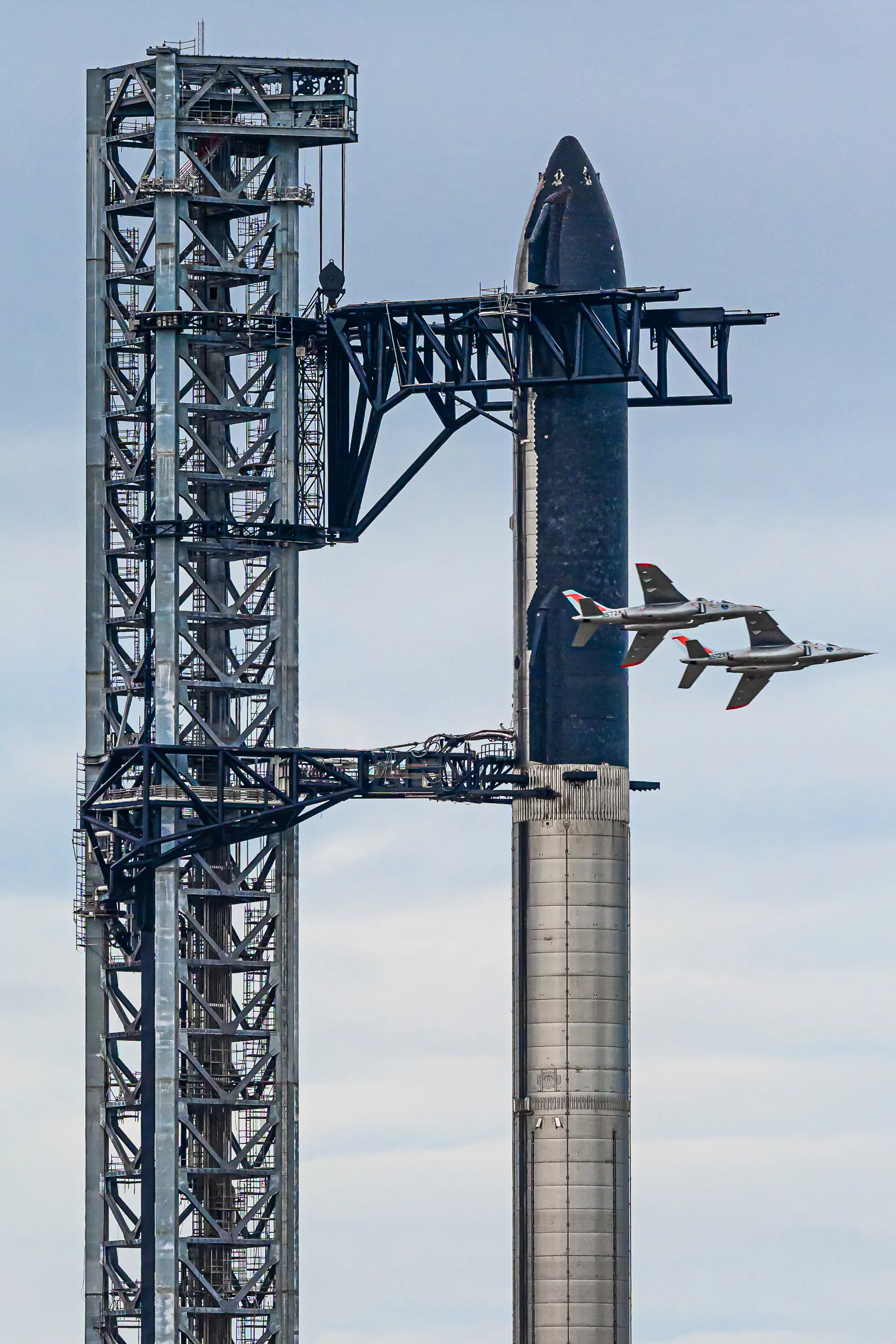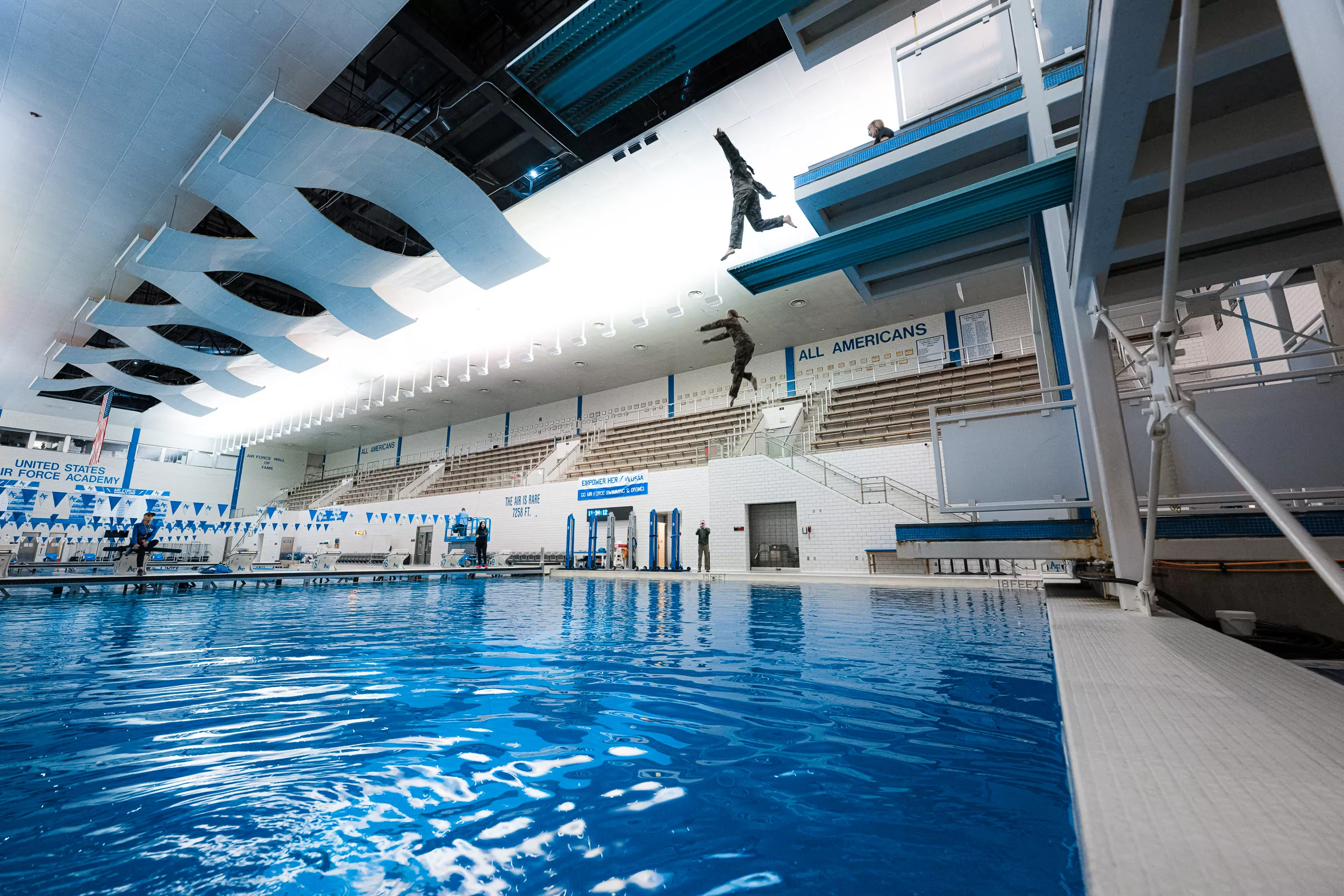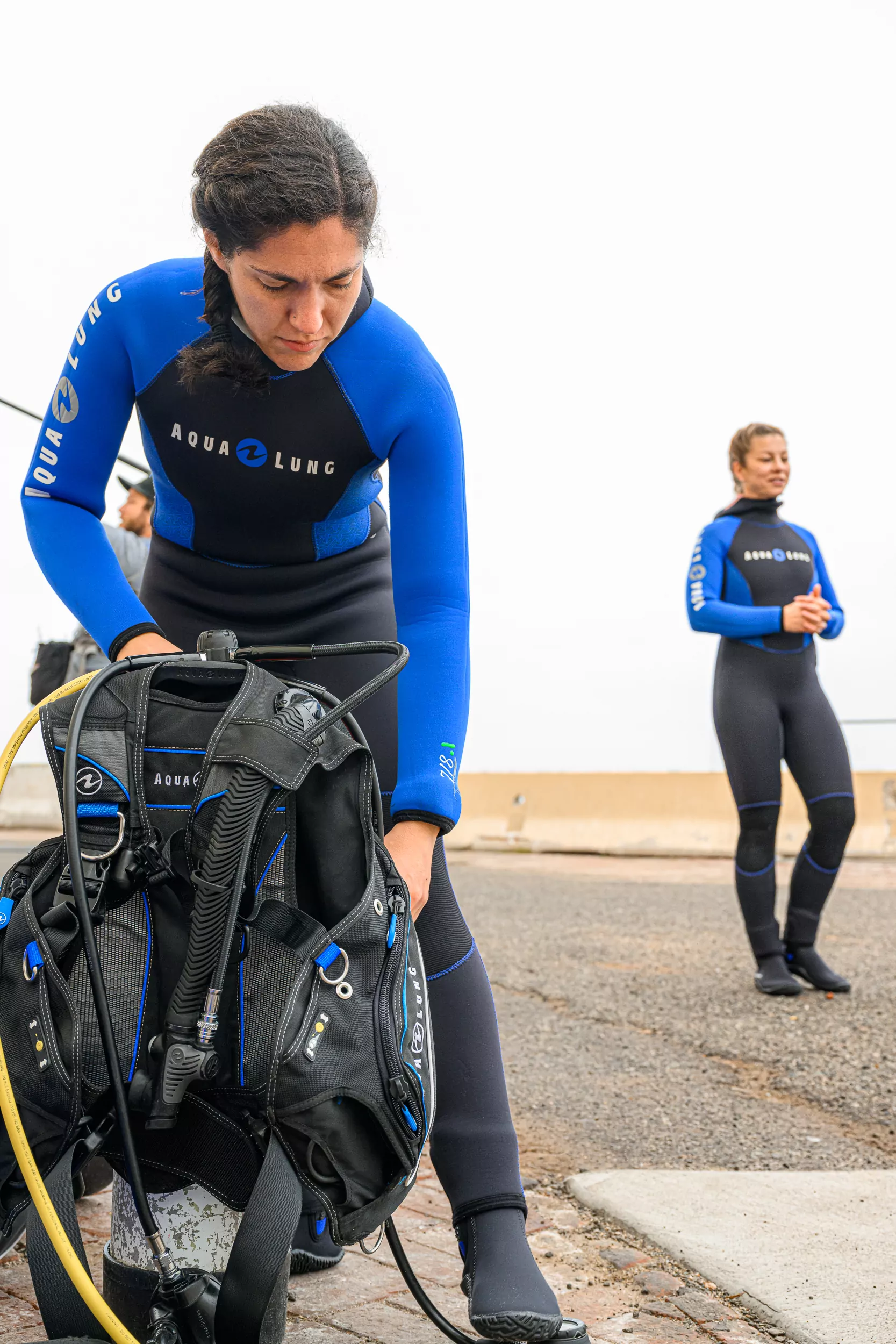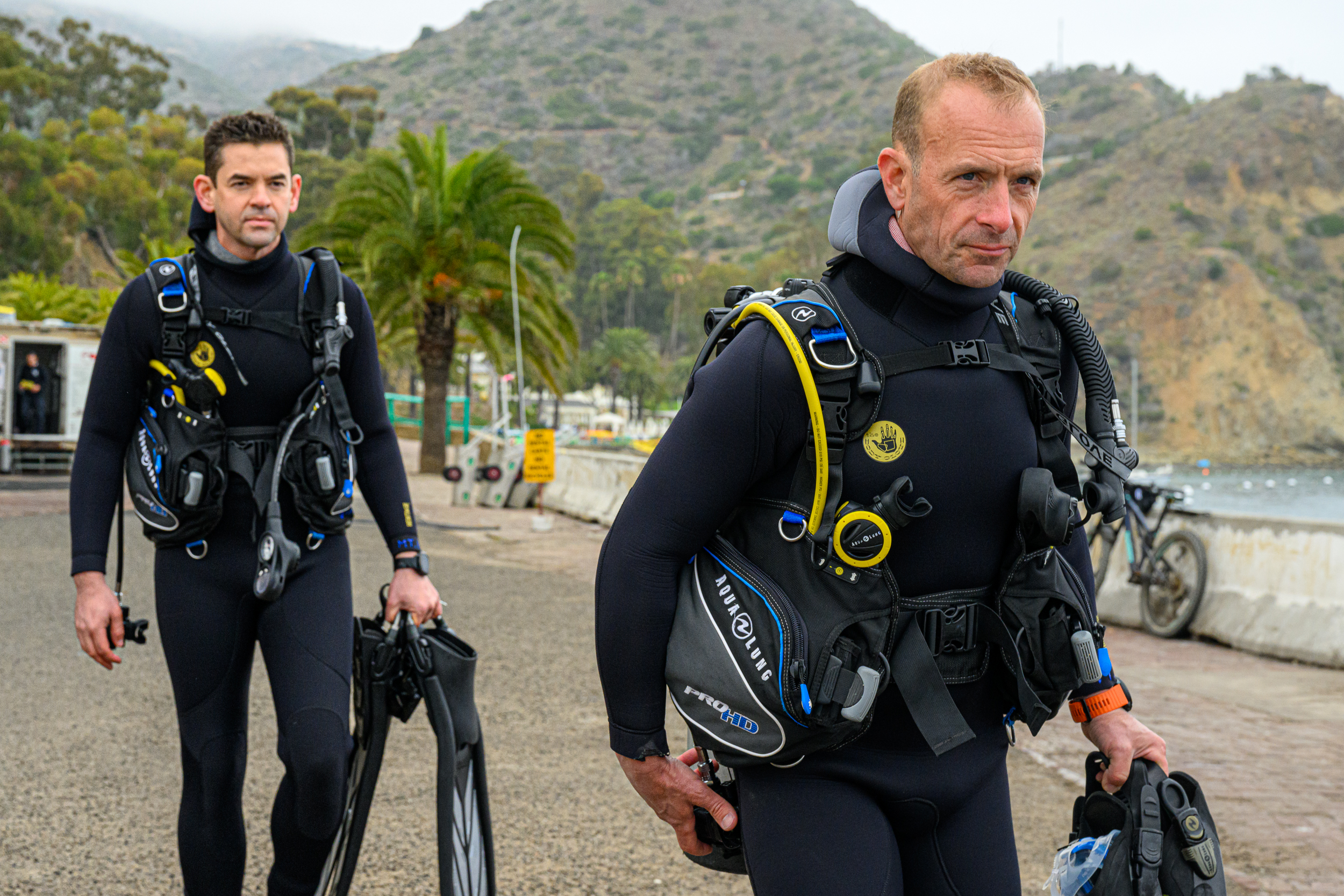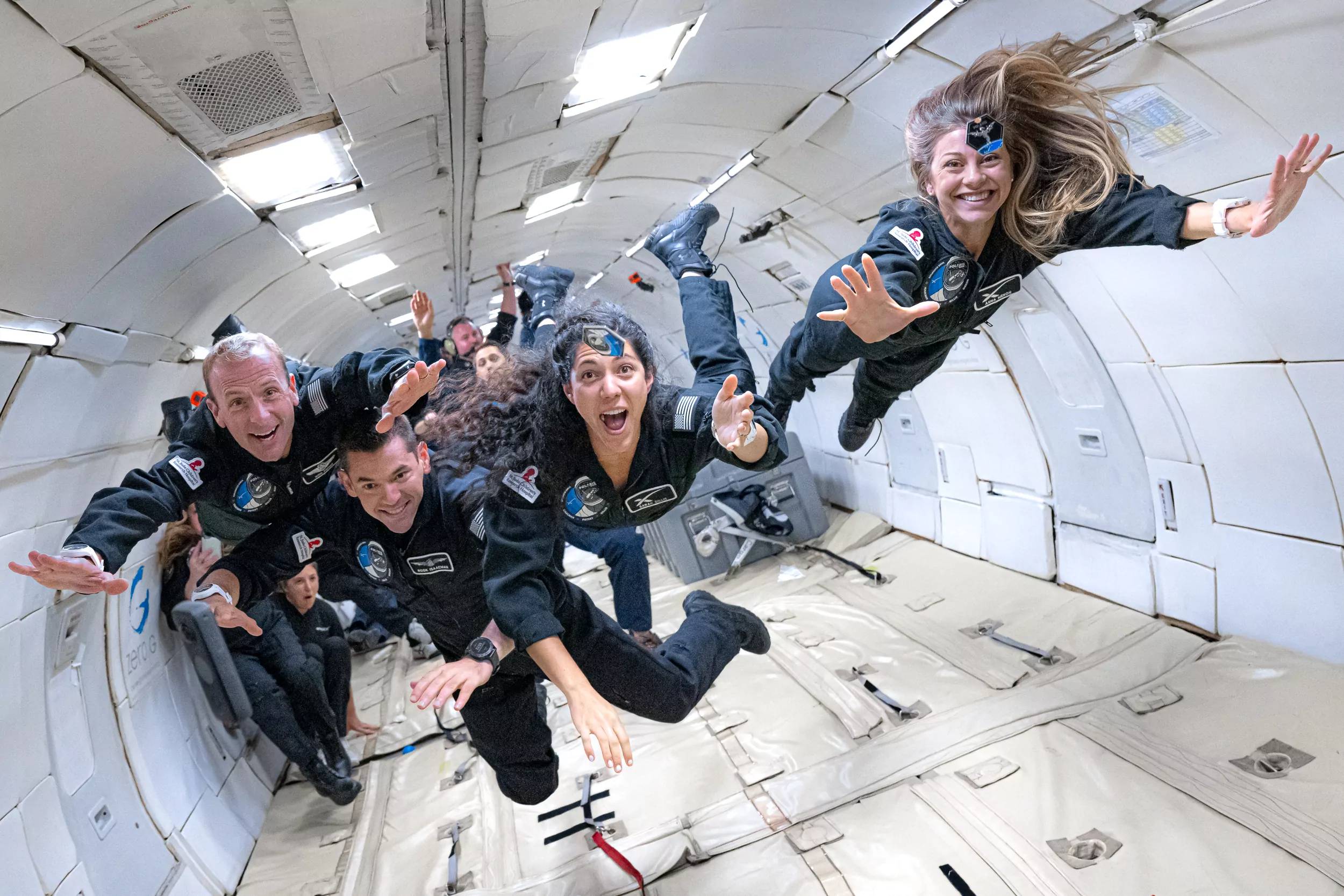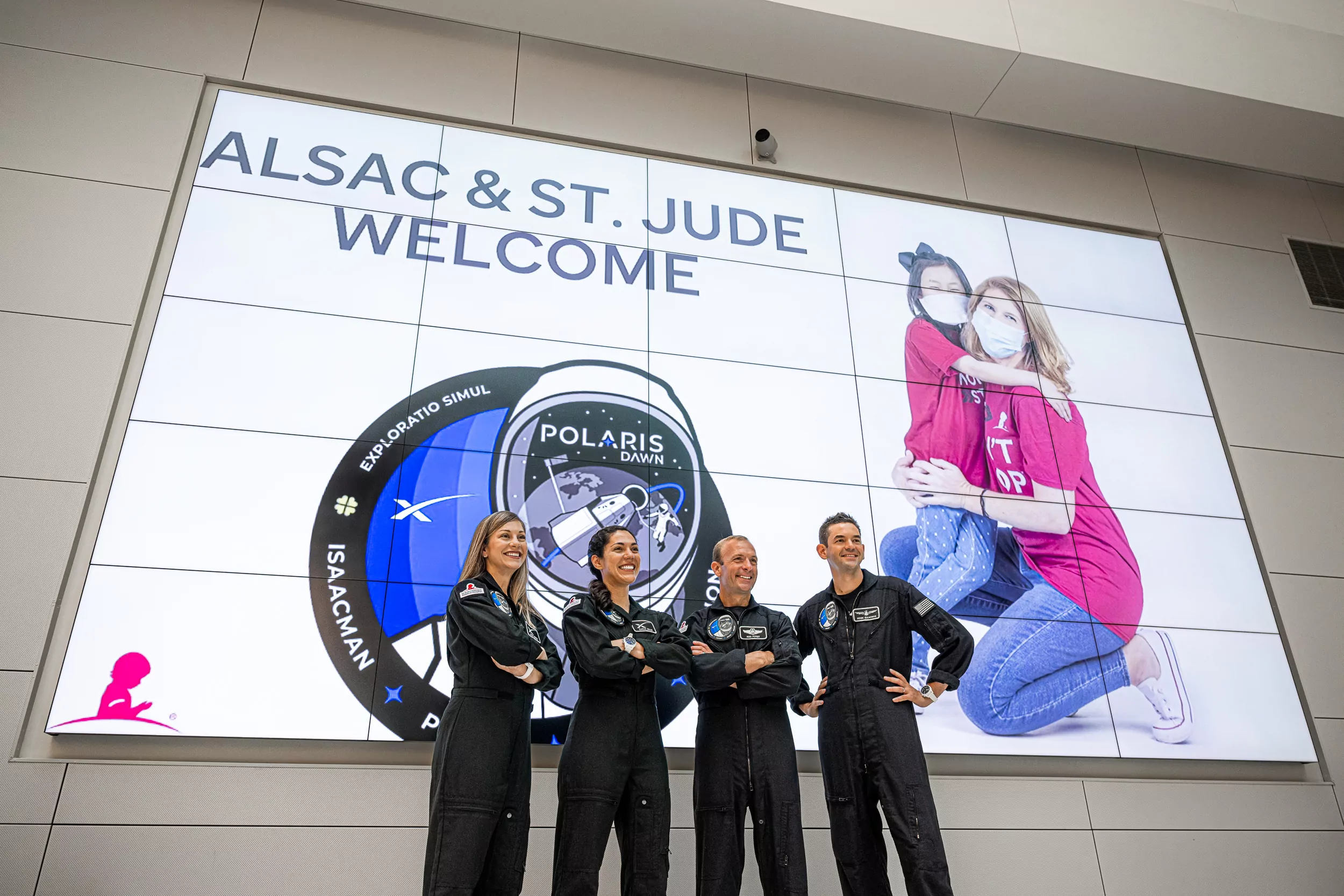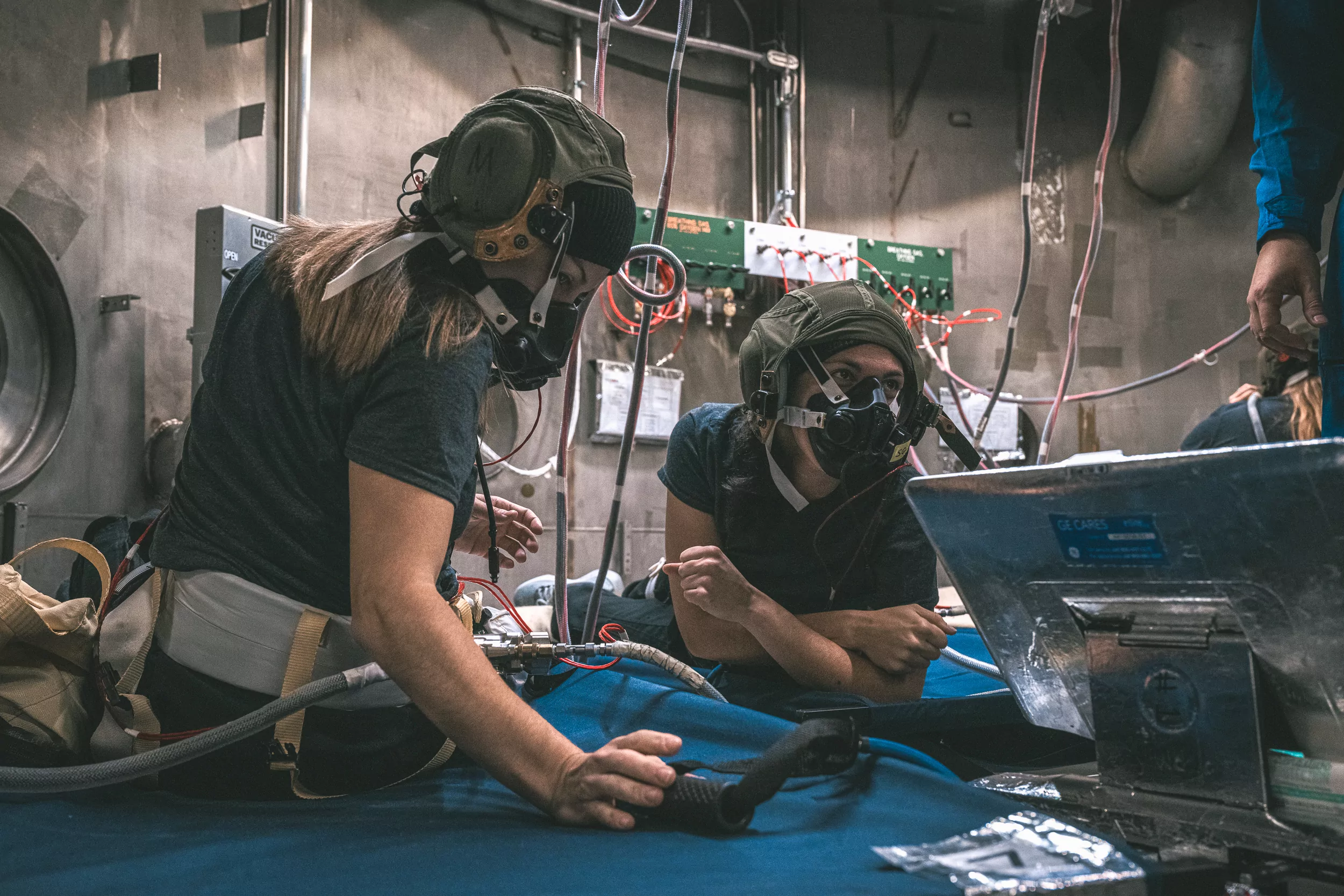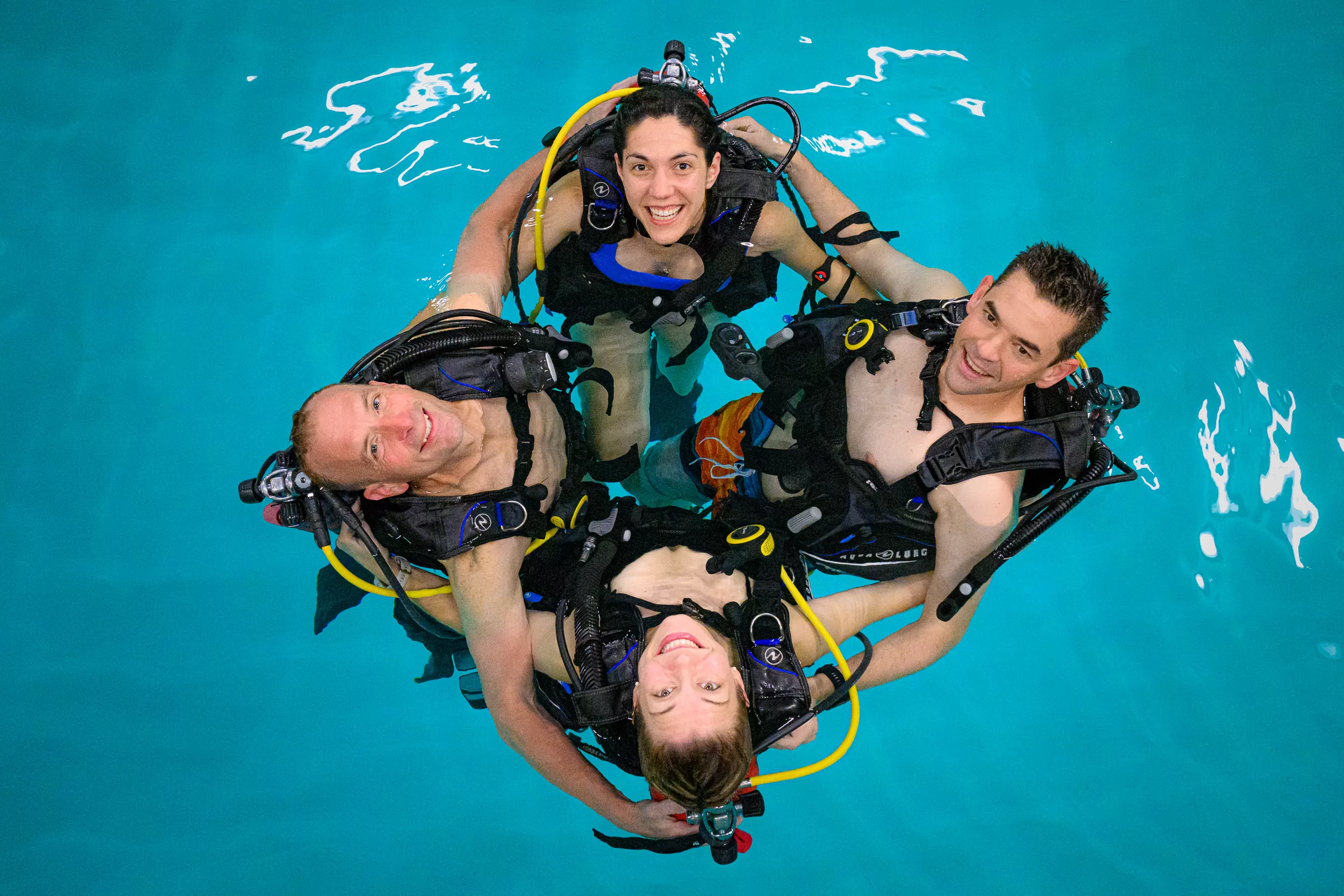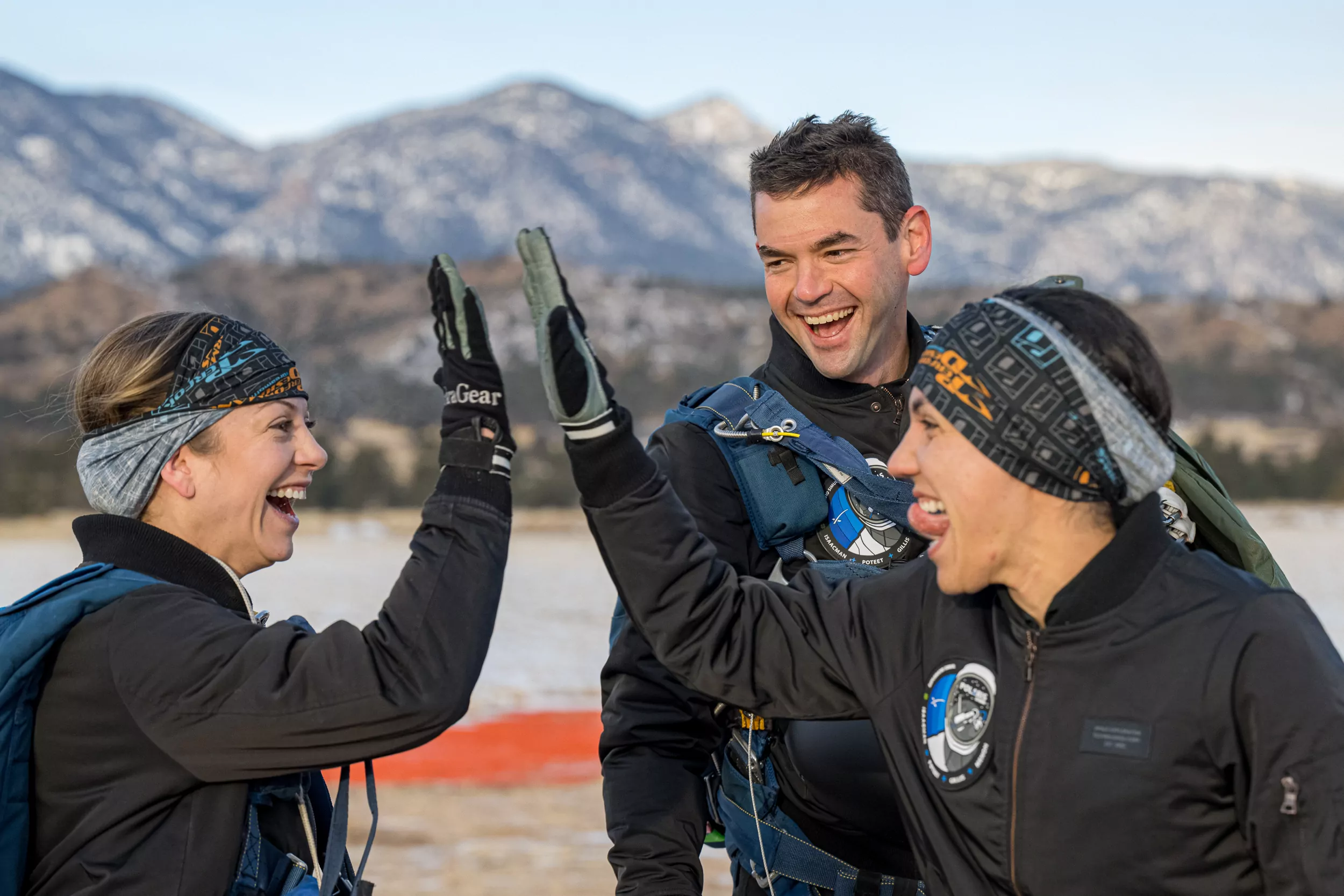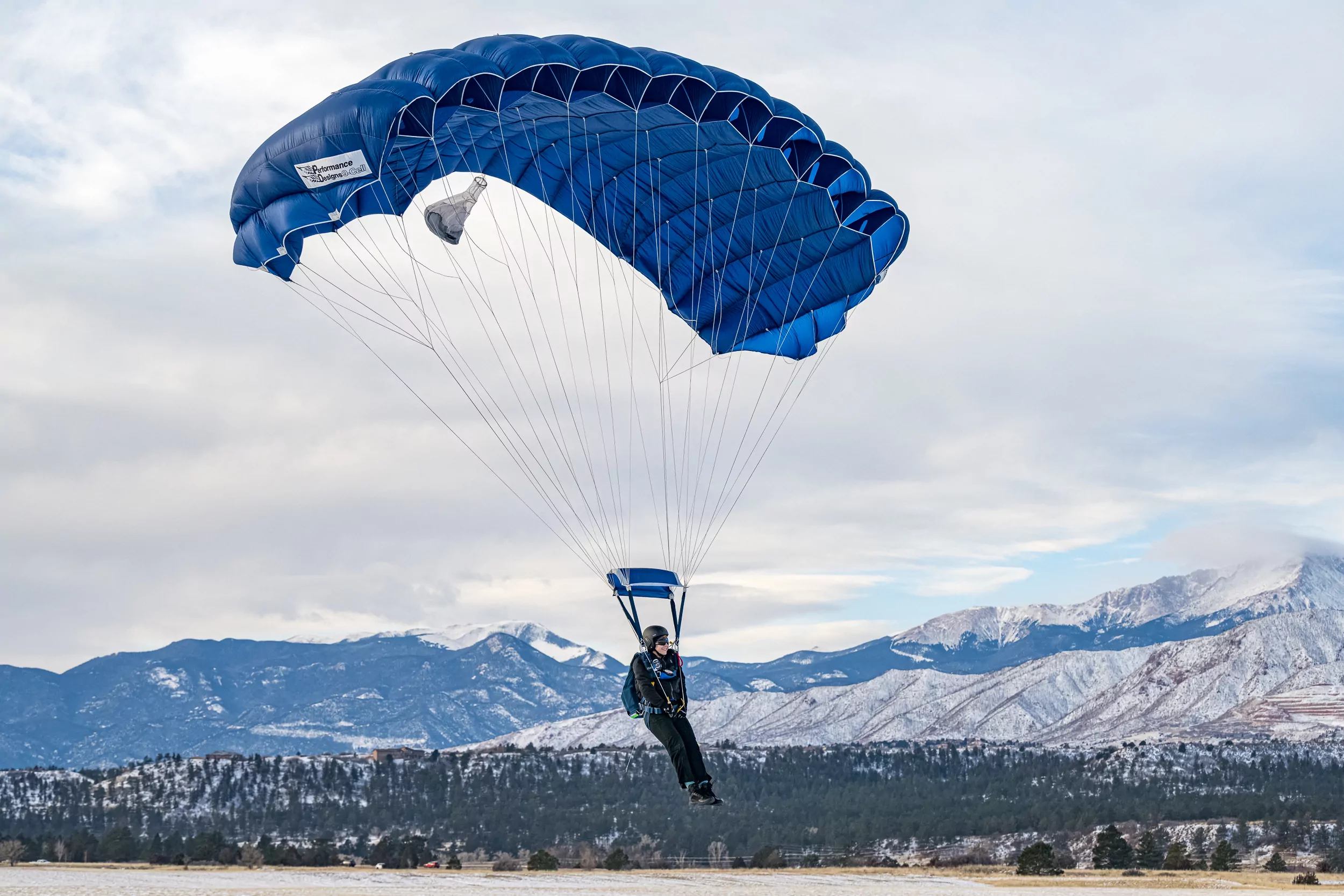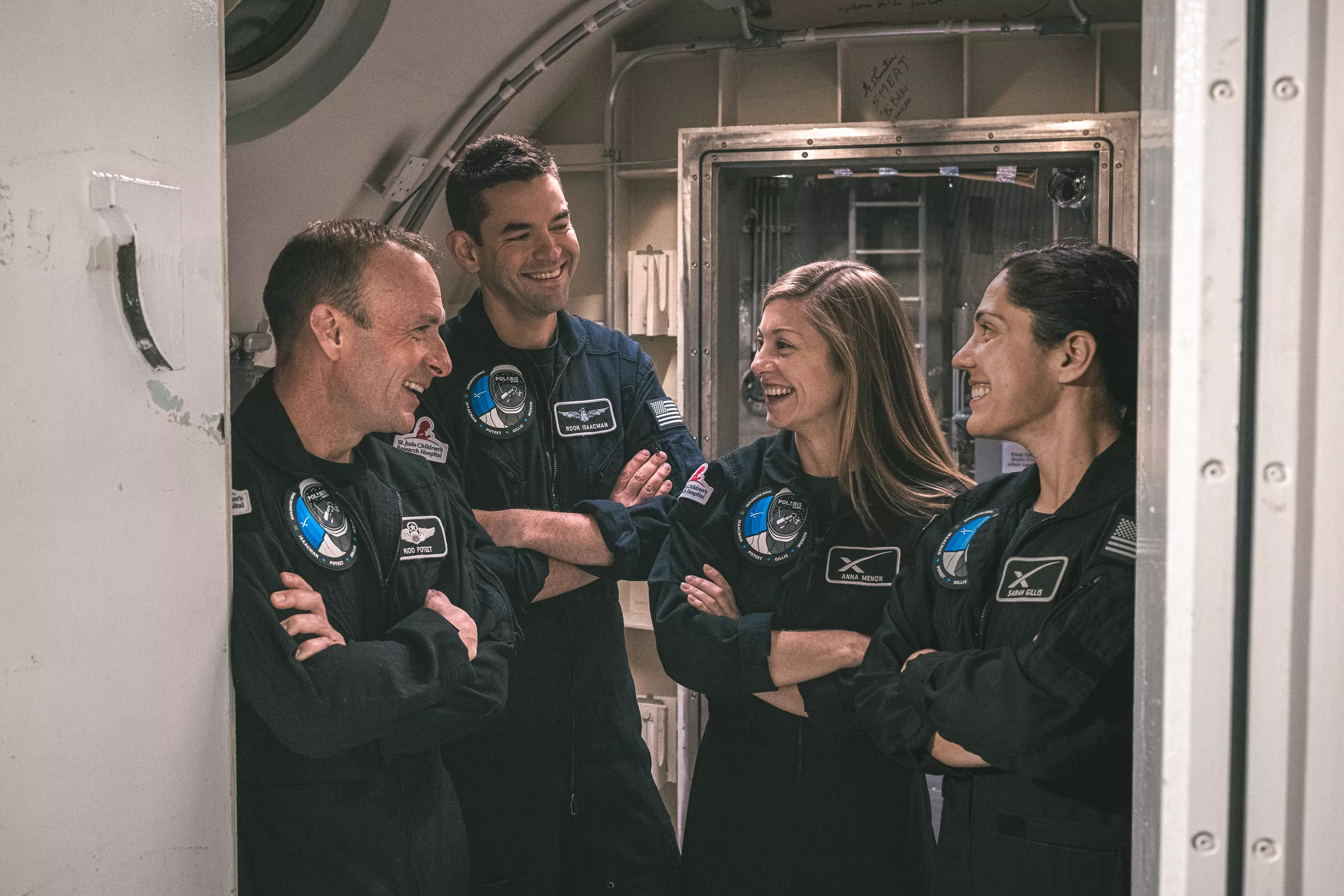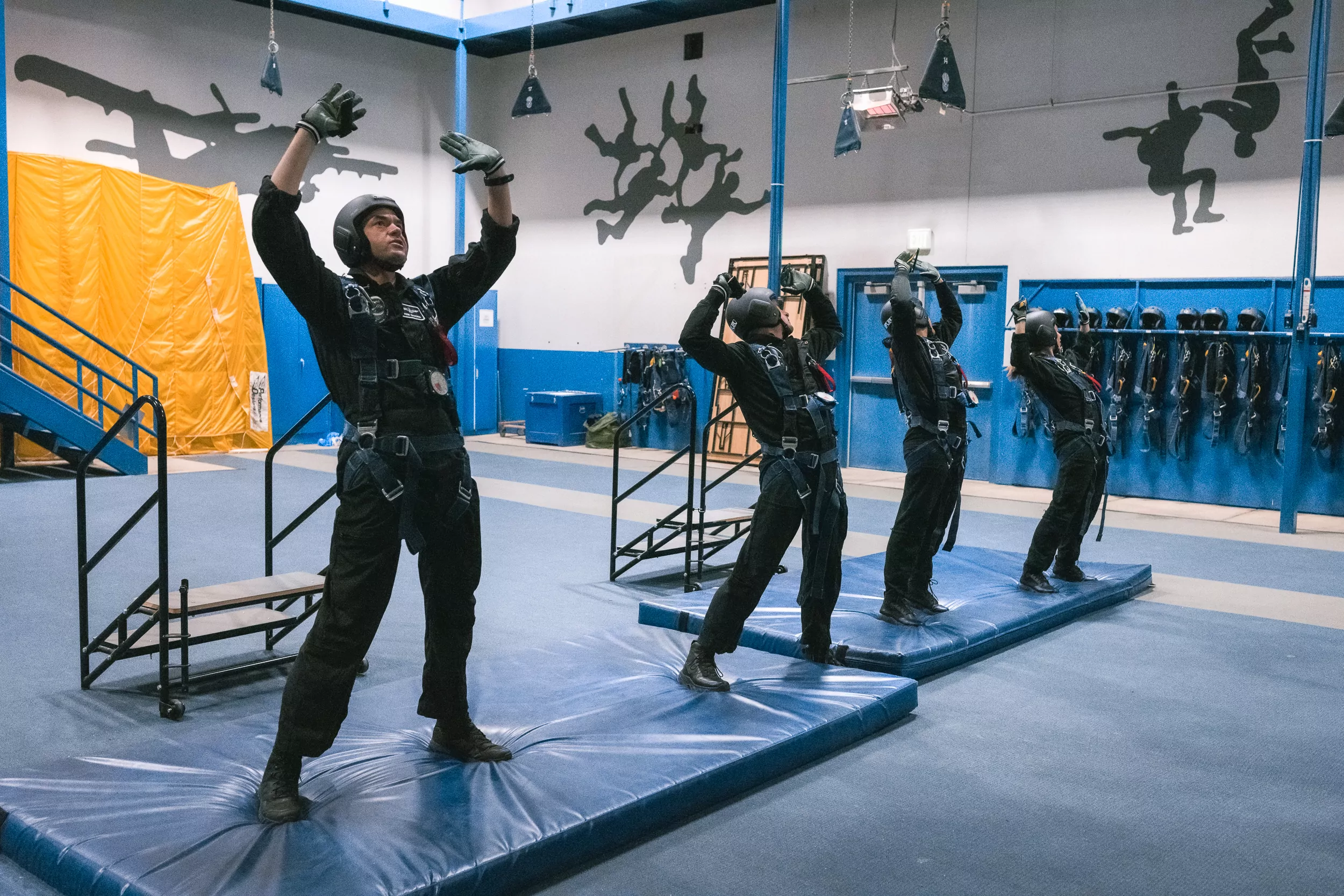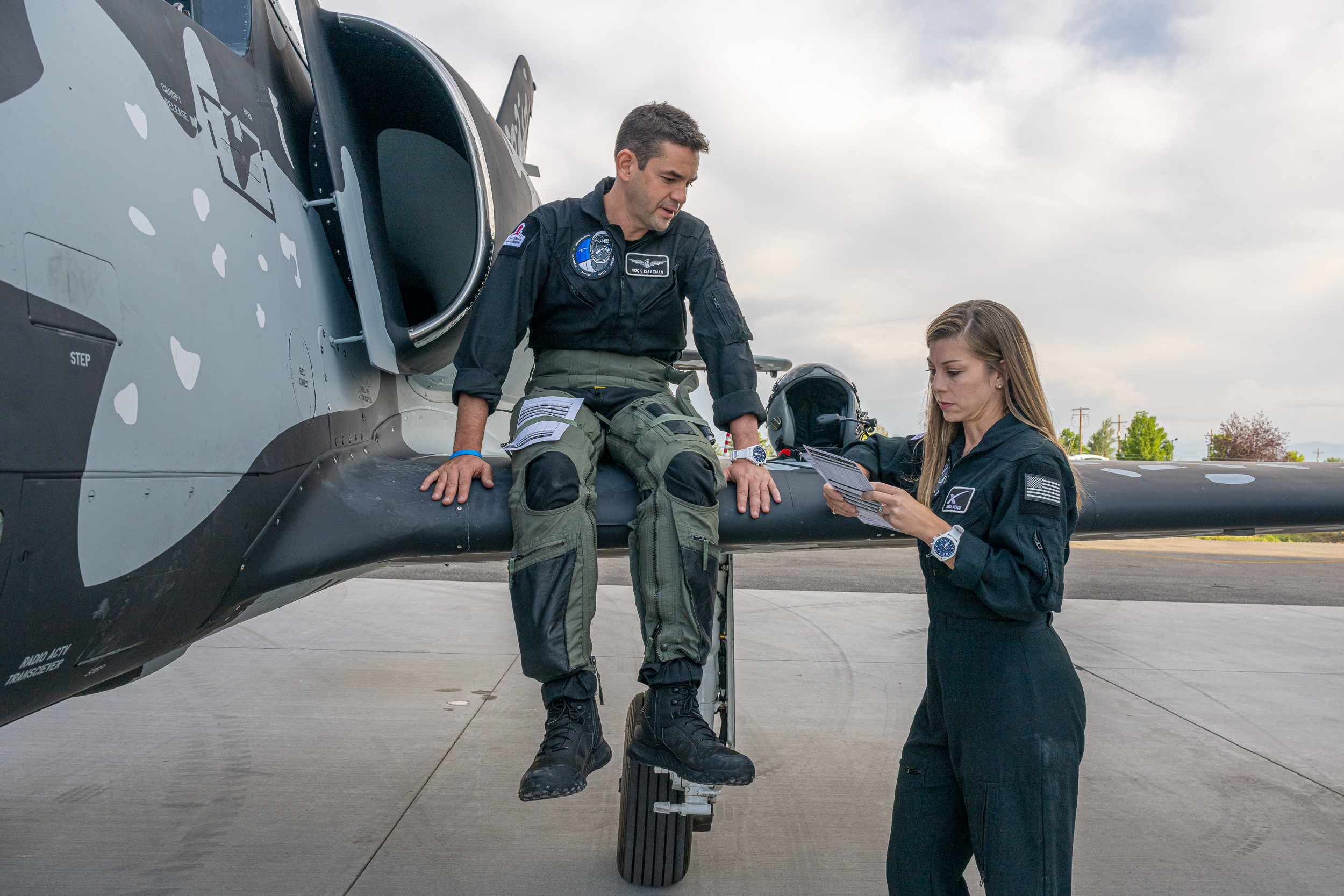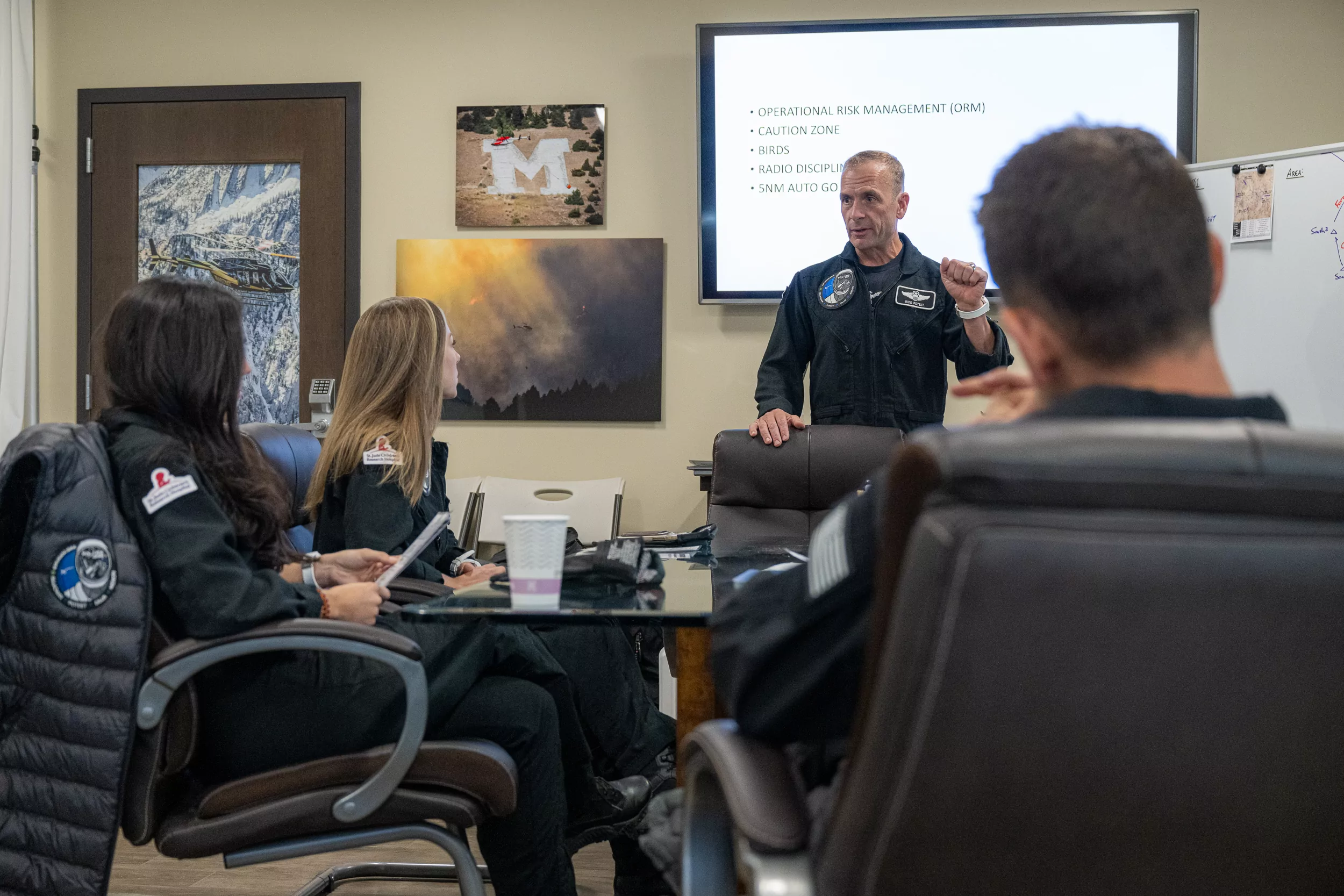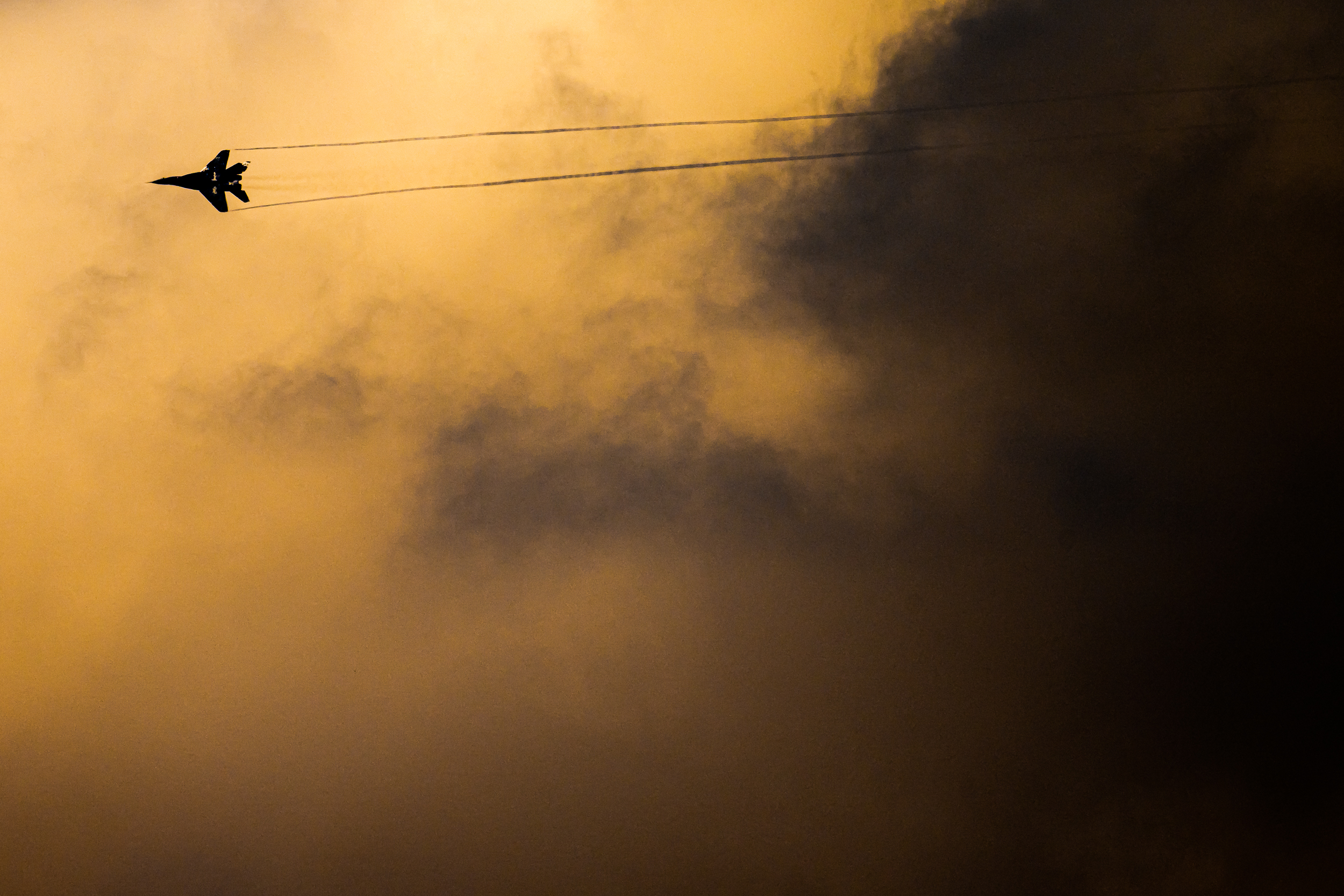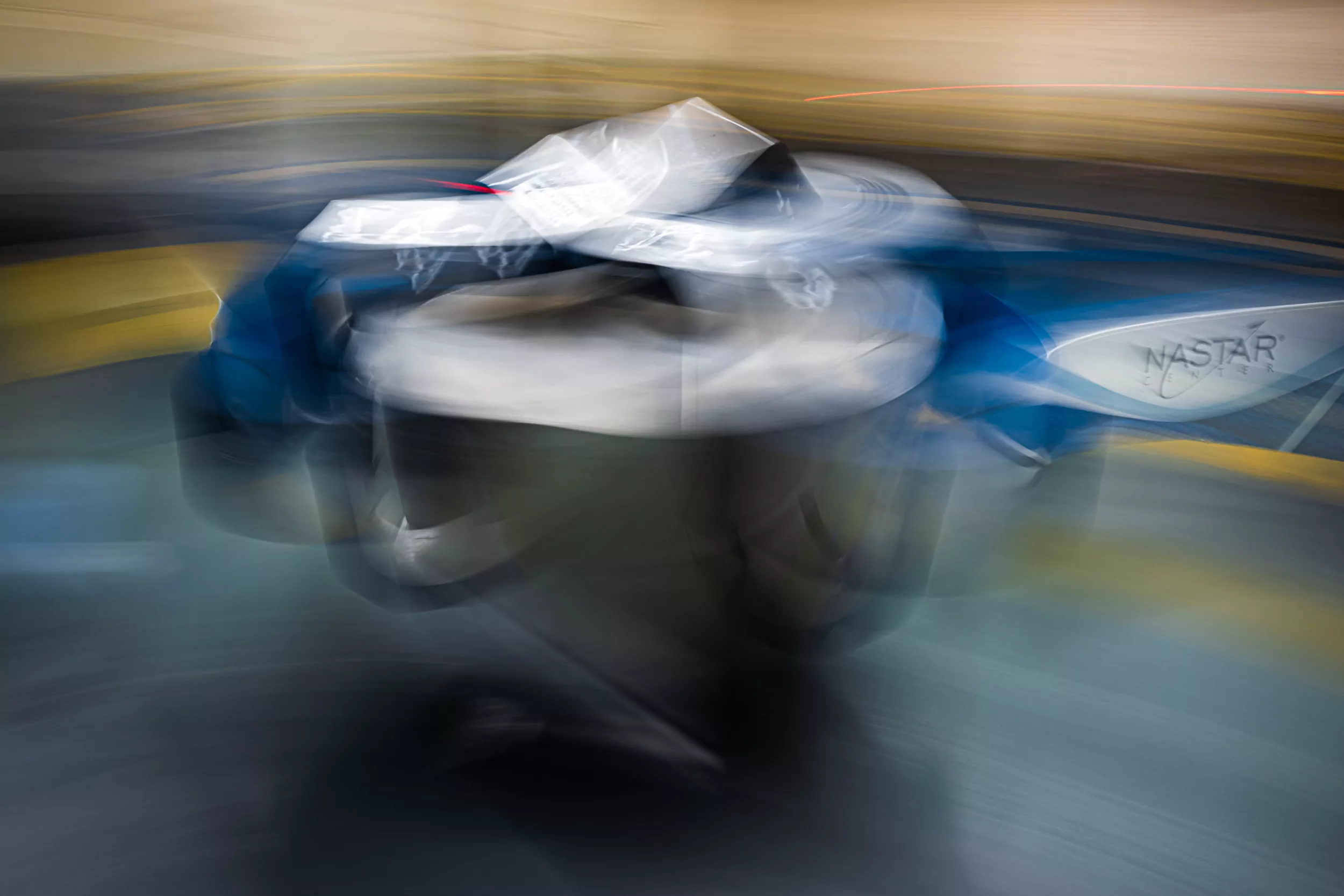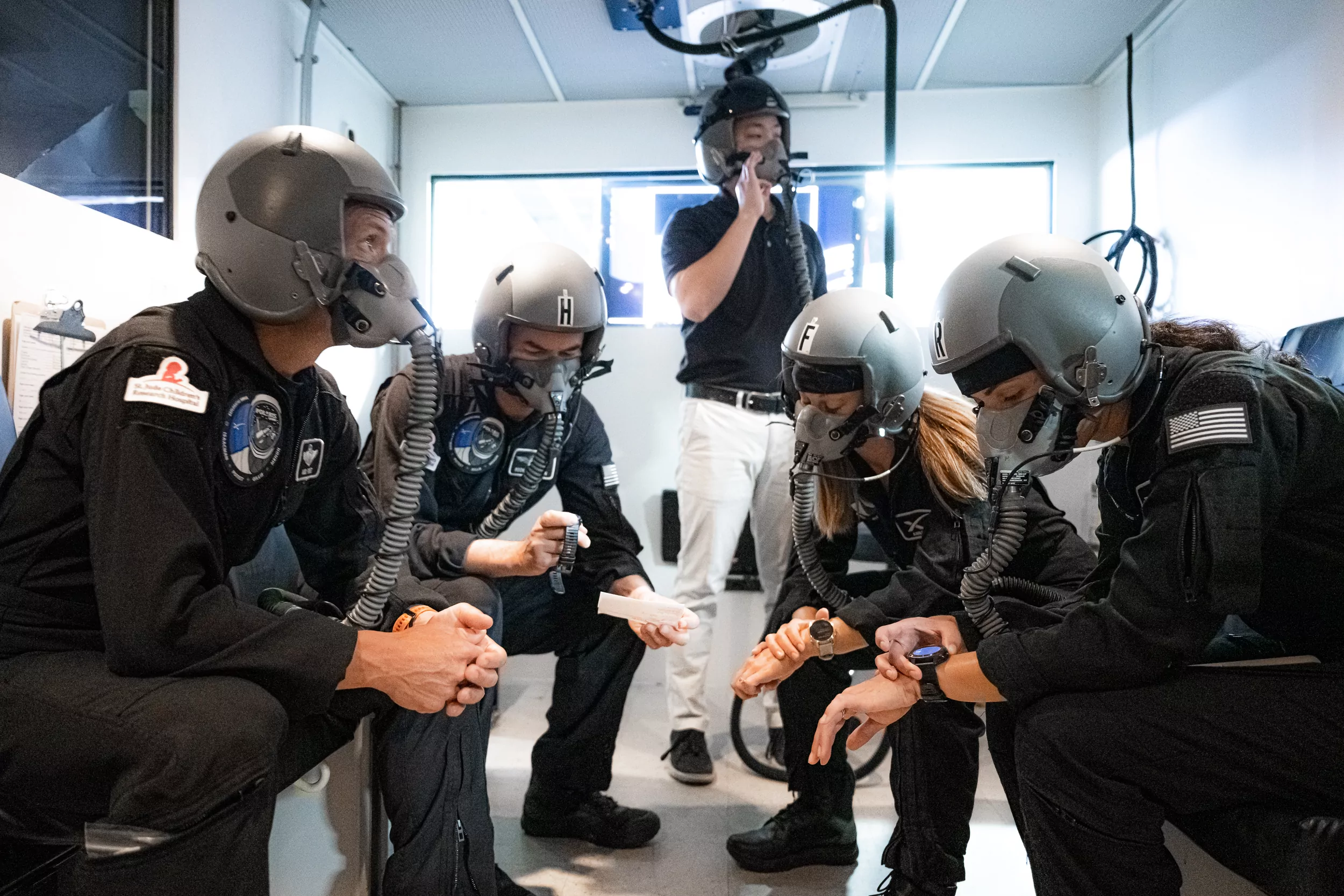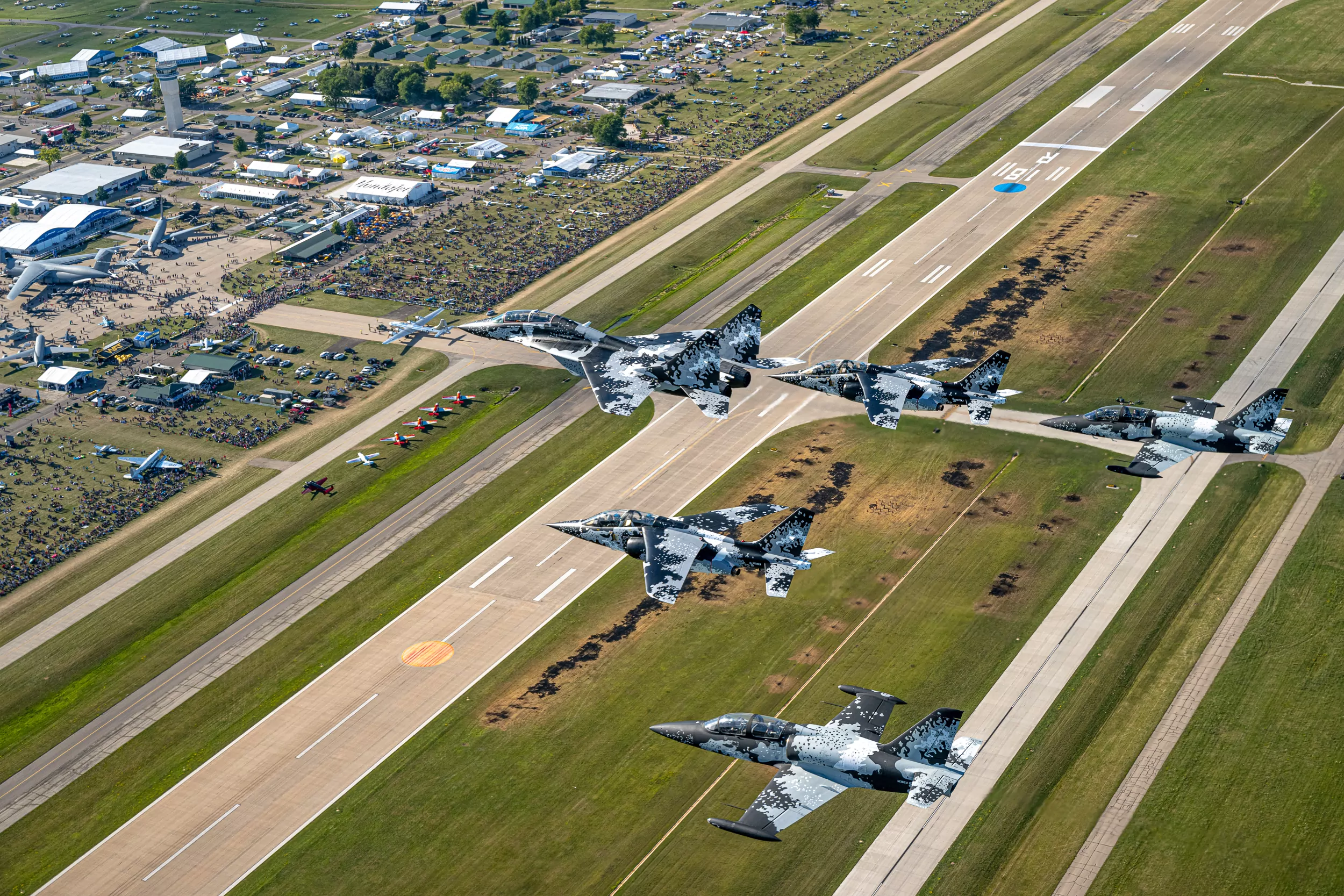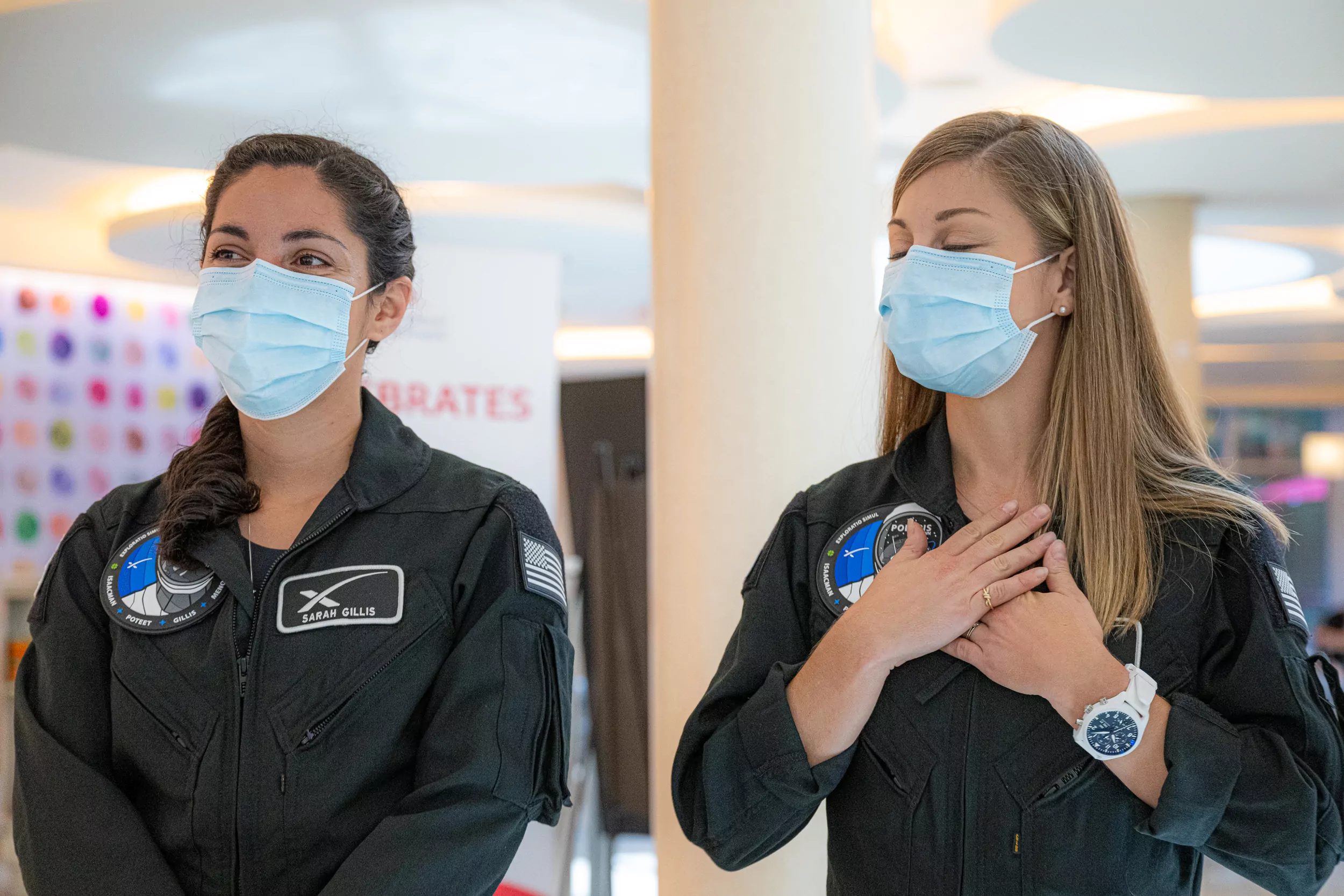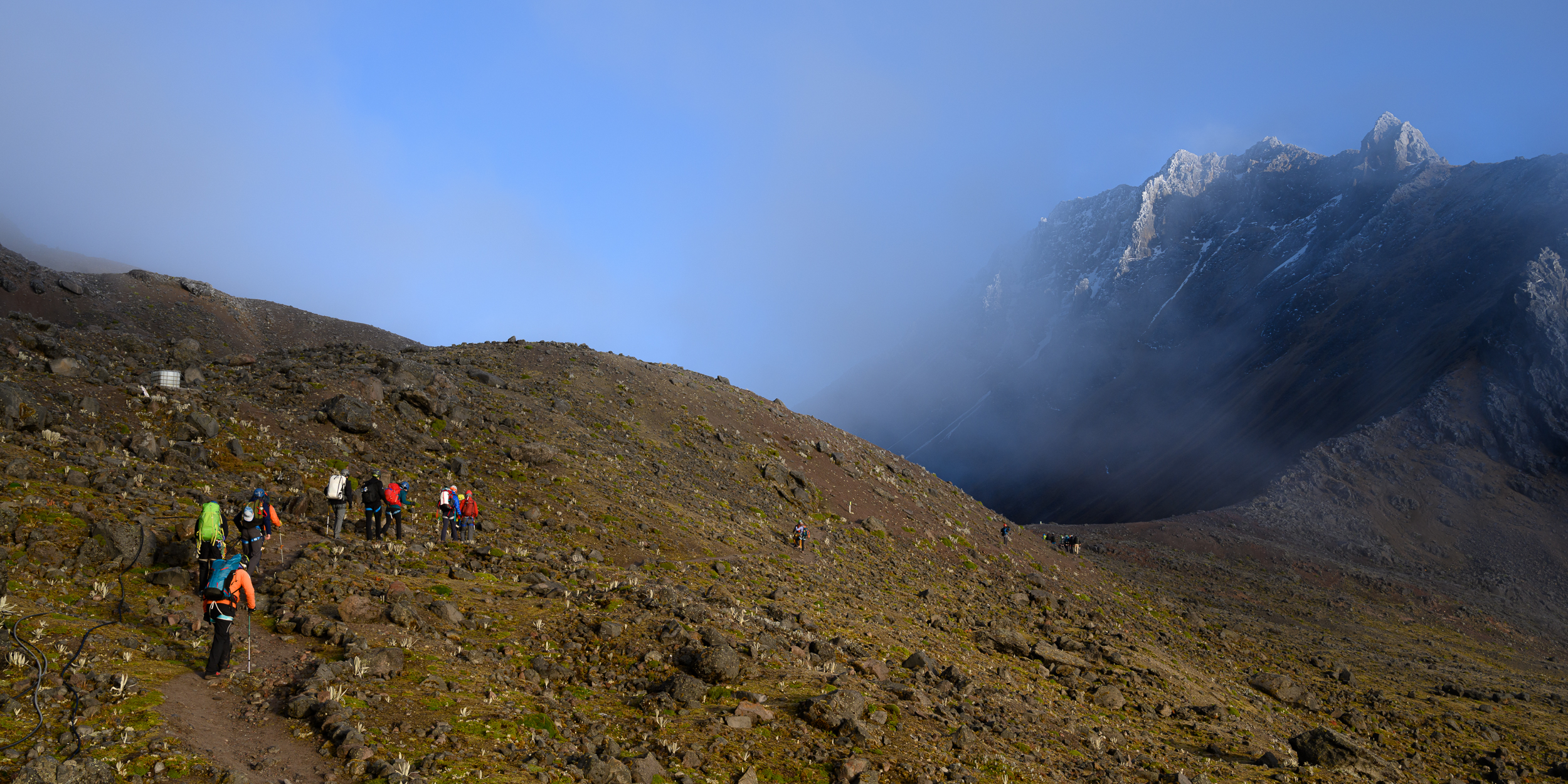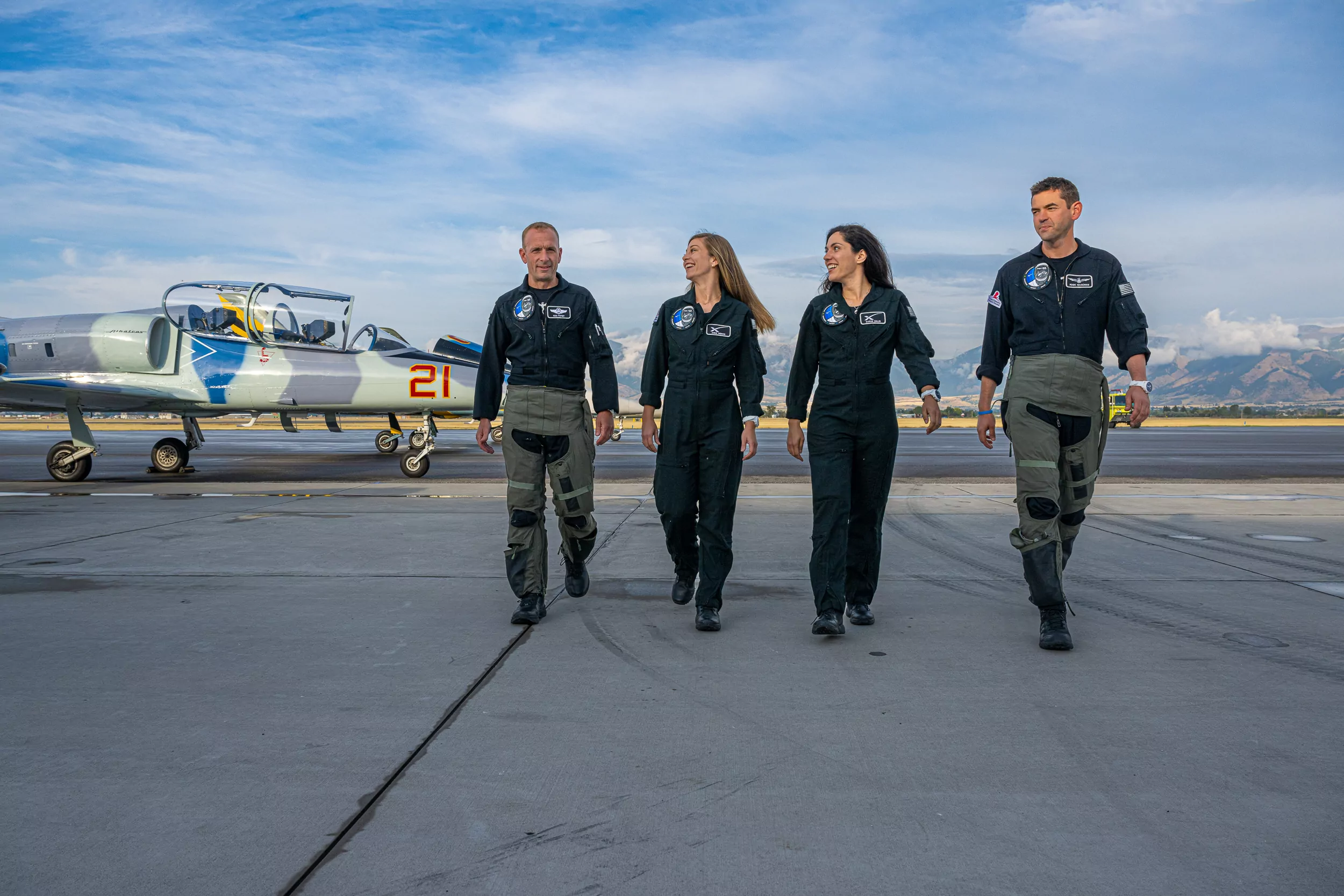
The First Year of Polaris & Launch Date Update for Polaris Dawn
One year ago this month, we announced the Polaris Program and its first mission, Polaris Dawn. The crew, consisting of Jared Isaacman, Kidd Poteet, Sarah Gillis, and Anna Menon, has spent the last year training for their mission, which will spend up to five days in orbit.
With an already-strong synergy forged during the Inspiration4 mission in 2021, the crew’s last year of training has strengthened their bond even further as they prepare to undertake several groundbreaking objectives:
— Endeavoring to reach the highest Earth orbit ever flown, with a targeted apogee of 1,400 kilometers above Earth;
— Attempting the first commercial extravehicular activity (EVA) with SpaceX-designed EVA spacesuits;
— Conducting extensive scientific research designed to advance both human health on Earth and our understanding of human health during future long-duration spaceflights; and
— Testing Starlink laser-based communications in space, providing valuable data for future space communications system necessary for missions to the Moon, Mars, and beyond.
Their training throughout the course of 2022 and into 2023 has included mission simulations and academic work at SpaceX headquarters in California, mountain climbing in Ecuador, scuba diving off of Catalina Island, medical skills training, fighter jet flights, centrifuge spins, time in an altitude chamber, a zero-gravity flight, a decompression sickness study at NASA’s Johnson Space Center, and the U.S. Air Force Academy’s AM-490 skydiving course in Colorado.
In addition to ensuring they are familiar with SpaceX’s Falcon 9 rocket and Dragon spacecraft, this extensive training regimen has provided the crew with valuable experience in making rapid, high-stakes decisions in high-consequence environments, ensuring they are mentally and physically prepared for spaceflight.
Climbing the Cotopaxi stratovolcano in Ecuador presented an opportunity for the crew to develop mental resilience by facing physical strain, challenging weather conditions, and elevations as high as 19,374 feet above sea level. This allowed the crew to build upon their endurance and mental toughness, both necessary qualities for the space environment.
Fighter jet training allowed for crew resource management, teamwork, and checklist procedures applied in high-consequence environment. This skillset translates into the spaceflight context, where the crew must be prepared to react swiftly to a wide range of nominal or off-nominal scenarios that could arise during their mission.
The crew’s scuba diving and participation in a decompression sickness study provided further insights into conducting the mission’s spacewalk. Communication methods used during these events are comparable to those required during a spacewalk, emphasizing the importance of clear and concise conveying of information between crew members and teams back on Earth.
Overall, this comprehensive training program fosters camaraderie and team cohesion among the crew, essential elements of any spaceflight mission, especially one as ambitious as Polaris Dawn. Understanding each other’s strengths and weaknesses allows the crew to operate effectively, efficiently, and safely on Earth, and ultimately, in space.
The group has also visited St. Jude Children’s Research Hospital in Tennessee, meeting doctors, researchers, and patients, while throughout the last year working to raise funds and awareness for the hospital to ensure no child dies in the dawn of life. Additionally, by providing Starlink to 100 schools in Chile and Brazil with Starlink, the Polaris team is striving to increase internet connectivity to communities around the world, which can improve education and telemedicine efforts in communities in need of greater connection to such resources.
With an extensive suite of roughly 38 science research experiments from 23 institutions planned for the Polaris Dawn mission, the crew has also spent significant time preparing to conduct that research on-orbit. Our program is excited to partner with a wide range of universities and scientific entities to push the boundaries of what science can be conducted during a five-day space mission, such as implementation of new cardiopulmonary resuscitation (CPR) procedures for use in the Dragon spacecraft, wearing of contact lenses to monitor changes in the shape and pressure of the eye, and usage of an ultrasound devices and other wearable technologies to measure the crew’s physiology and biometrics during launch and after splashdown. The findings from these experiments will help us understand more about the human body in space ahead of future long-duration human spaceflight missions.
With continued work in progress to ensure a safe launch and return while achieving the mission’s ambitious goals, including the first-ever commercial spacewalk and first usage of SpaceX’s EVA spacesuit, we are now targeting no earlier than summer 2023 for the launch of Polaris Dawn.
Our program’s North Star is to push the boundaries of what’s possible in spaceflight and inspire individuals to look up to the stars, with an ever-present focus on tackling difficult challenges on Earth. With Polaris Dawn on the horizon and future Polaris missions set to follow, we are excited to follow those goals toward a greater future on Earth and in space.
